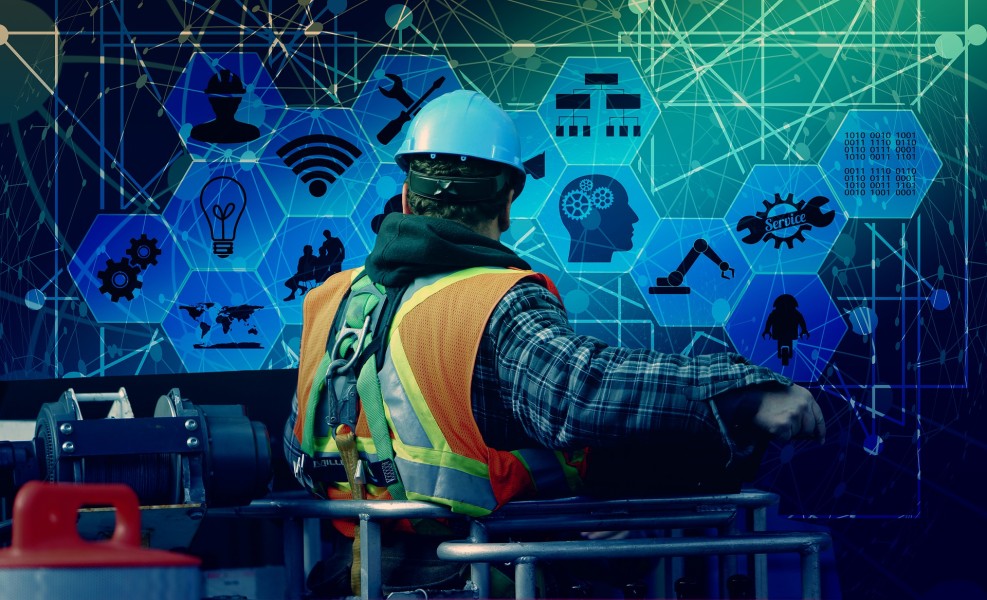
19 de janeiro • 7 min read
Agilidade e inovação na cadeia de valor industrial
É chegada a hora de se adaptar e pensar de forma diferente? Neste artigo, discuto como as indústrias podem aproveitar as atuais dinâmicas geopolíticas e ondas de investimento para se prepararem para o futuro e ficarem à frente de seus concorrentes.
A pandemia global da COVID-19 expôs a fragilidade das cadeias globais de produção e abastecimento, causando escassez substancial de produtos essenciais, como suprimentos médicos, minerais essenciais e semicondutores. No entanto, o sector industrial, em geral, tem demonstrado uma resiliência incrível e tem se recuperado rapidamente, apesar dos significativos ventos contrários.
As atuais forças geopolíticas estão mantendo em foco os riscos da cadeia de abastecimento, resultando em maior conscientização pública, intervenções governamentais e ações de empresas individuais. As tendências da indústria e do mercado irão provavelmente acelerar ainda mais as mudanças organizacionais em 2023, particularmente neste cenário económico incerto com guerra e inflação persistente.
Trazer os produtos mais perto dos clientes obviamente elimina algumas incertezas e riscos relacionados com a cadeia de abastecimento, mas realocar por completo a produção de produtos de elevado valor agregado ao território dos Estados Unidos é uma tarefa desafiadora e só funcionará com agilidade e inovação em toda a cadeia de valor industrial. De acordo com o “Relatório do Estado da Manufatura de 2022”, 93% das empresas industriais buscam soluções tecnológicas para aumentar a sua eficiência operacional no desenvolvimento de novos produtos.
As empresas nacionais americanas e offshore que comprometem investimento estrangeiro direto nas suas operações baseadas nos Estados Unidos esperam criar diretamente um número significativo de novos empregos, trazendo trabalho de volta a aquele país. Ao mesmo tempo, o programa CHIPS for America prevê o investimento de US$ 50 bilhões nos próximos cinco anos para revitalizar a indústria nacional de semicondutores e estimular a inovação, ao mesmo tempo que cria empregos bem remunerados nas comunidades de todo o país.
Muitos fabricantes de automóveis com operações nos EUA planejam aumentar significativamente a produção de veículos eléctricos (VE) nesta década e, neste processo, realizar investimentos colossais de capital. Como resultado, há uma onda de novos investimentos em giga-fábricas, grandes instalações dedicadas à produção de baterias de íons de lítio. O investimento planejado ultrapassa US$ 40 bilhões, visando cidades dos Estados Unidos para construção de parte crucial da cadeia de abastecimento nacional de baterias e veículos elétricos.
Estes “ventos da mudança” apresentam uma oportunidade única para criar valor econômico, estratégico e social, ao passar de uma economia onde a competitividade se baseia exclusivamente na minimização de custos para uma economia baseada na geração de valor e na inovação.
Innovation Business Outcomes
According to Forrester's latest research, companies that met customers' needs by being future fit, even in uncertain times, grew revenue 1.8 times faster than their peers.
Digital transformations are notoriously difficult to scale up across networks of factories. The historical divide between siloed IT (information technology) and OT (operations technology) has aggravated two significant barriers of change: technology debt and vendor lock-in.
A significant portion of the industrial sector currently works with an aging legacy infrastructure and applications running on a complex mix of on/off-premises technologies. Most of these legacy technologies expose businesses to security and vendor lock-in risks since they are based on proprietary standards that demand substantial switching costs.
That’s the unseen technology debt, the off-balance-sheet accumulation of all the necessary technical updates a company needs to perform to modernize its systems. It’s a complexity tax that every new project pays, inhibiting companies’ long-term velocity and productivity and harming budgets and returns on investment. Mounting tech debt risks can eventually materialize in severe financial consequences like Southwest's recent $825 Million loss.
In this situation, business decision-makers face a balancing act: how to innovate and deliver critical business outcomes with such a significant tech debt and many proprietary legacy systems? In other words, how to lead the “winds of change” and stay ahead of competitors?

Figure 1: Leading the “winds of change” focusing on critical business outcomes.
Energized by the “Winds of Change”
Future-ready companies have been adapting and thinking differently. They have embraced agile practices and distributed computing technologies like edge computing, containers, microservices, and container orchestration to optimize existing systems and drive innovation instead of rebuilding them entirely from scratch and running into long implementation timelines, prohibitive costs, and potential productivity losses.
Modernization is the practice of updating older software and infrastructure for newer computing approaches, including newer languages, frameworks, architectures, and infrastructure platforms. Rather than retiring an existing system or replacing it wholesale, legacy modernization extends the lifespan of an organization’s software and infrastructure while also taking advantage of technological innovations. While the term “legacy” sometimes has a negative connotation in technology, these legacy systems are often among a business’s most mission-critical applications and infrastructure.
The adoption of distributed computing paradigms in industrial modernization shifts the technology stack from a tightly coupled, hierarchical, siloed, and point-to-point structure to one that is application-driven, loosely coupled, software-defined, and integrated across all layers of the architecture (Figure 2):

Figure 2: Shifting the industrial technology stack
This new converged IT/OT stack integrates automation networks for mission-critical control and sensing functions (usually based on field buses, ISA 100, or HART protocols, etc.) with less critical applications and brings compute and data storage closer to the sensors. These applications, known as edge native applications, run closer to the data and address critical industrial operating constraints such as:
● Low latency with an immediate decision and closed-loop feedback.
● Limited or very limited network bandwidth and connectivity.
● Limited computing resources.
● Limited on-site support resources.
● Confidentiality and privacy data breach risks.
Successful modernization programs have prioritized low-risk and high-yield initiatives in productivity and efficiency gains to realize benefits and quickly reallocate funding to deploy innovative edge native applications like:
● Predictive maintenance significantly reduces maintenance costs and total machine downtime by proactively analyzing and diagnosing issues without the need for human intervention. Maintenance plans and work orders are proactively created and updated based on actual equipment operating conditions.
● Smart quality inspection & control significantly increases product quality and yield by proactively detecting defects on production lines using multisensory data (e.g., cameras, ultrasound sensors, accelerometers, etc.).
● Autonomous inventory management brings greater visibility, reduces inventory losses, and ensures critical items are in stock at the right time using autonomous off-the-shelf drones.
● Advanced safety and human effectiveness increase workforce safety and compliance across the factory floor, detecting equipment anomalies in real-time, offering 3D work instructions, and overlaying them onto physical assets and environments using AR/VR glasses and technologies. It also accelerates the onboarding process of new or seasonal employees by bringing off-site classroom-style training directly into the factory for on-the-job and in-context training.
● Computational generative design accelerates and improves new product development processes generating multiple simultaneous solutions based on real-world design goals, product performance requirements, and manufacturing constraints.
● Advanced automation simplifies the product design process and enables mass production and customization at scale (e.g., additive manufacturing)
Unsurprisingly, 59% of organizations with application modernization plans in progress reported that the activity has intensified over the past 12 months, with almost 20% saying it has "significantly accelerated.”
Clear for Take Off
In the aftermath of the COVID-19 global pandemic, no certainties are left except that there will be another disruption anytime soon.
Industrial companies have a unique opportunity to take advantage of the current geopolitical dynamics and investment waves,” become future-ready, and stay ahead of competitors. It’s not an easy task and won’t work without agility and innovation across the industrial value chain.
A modernization approach based on agile practices and distributed computing technologies extends the lifespan of an organization’s software and infrastructure while also taking advantage of technological innovations. It’s the balancing act that reaps benefits from prioritizing low-risk and high-yield initiatives that provide the funding for innovative use cases.
In this age of ruptures, industrial enterprises are forged ahead by powerful “winds of change.” Those who lack the urgency to adapt and think differently, believing their margins are too thin to innovate or that “the short run is always trumping the long”, will be left behind.





